When it comes to fishing, you know you’ll be getting your money’s worth in the offshore waters of the “Golden State.” Deep sea fishing in San Francisco is no exception. Just a dozen miles out from the Golden Gate Bridge, you’ll find world-class fishing that’ll have you coming back for more again and again.

As it usually goes, the further out you go, the bigger your potential catch. With a varied cast of prized fish, there’s something here for everyone at almost any time of year. In this article, we’ll introduce you to the local favorites and the techniques used to catch them, among more. So without further ado, let’s jump in!
Top Deep Sea Fishing Targets in San Francisco
The ideal time to go fishing depends on the species you’re hoping to catch. Generally speaking, you can head out into the deep blue at any time between April and December. From bottom feeders like Rockfish, Lingcod, and Halibut to adrenaline-pumping Albacore Tuna, there’s plenty of fish in the sea. If you aren’t very picky, book a trip for late summer or fall. You’ll be able to target most of the species we’ll be talking about here.
Chinook Salmon

Let’s start off with the most approachable of the bunch – Chinook (King) Salmon. These superstars only move out of their freshwater habitat once they’re big enough to migrate into the Pacific Ocean. When they hit their stride in fall, you’ll find a lot of big ones just 10 miles west of the Golden Gate Bridge. Local charter captains keep a close eye on their annual migration patterns so they know where to fish for the best results.
Earlier in the year, you’ll mostly find Chinook at the Farallon Islands, Pedro Point, and the Duxbury Reef off the shore of Marin County. They can weigh anywhere from 5 to 40 pounds so you might be looking at a real workout before you manage to reel one in all the way. Compared to going after river Kings, this is a whole other ballgame you won’t want to miss.
Rockfish
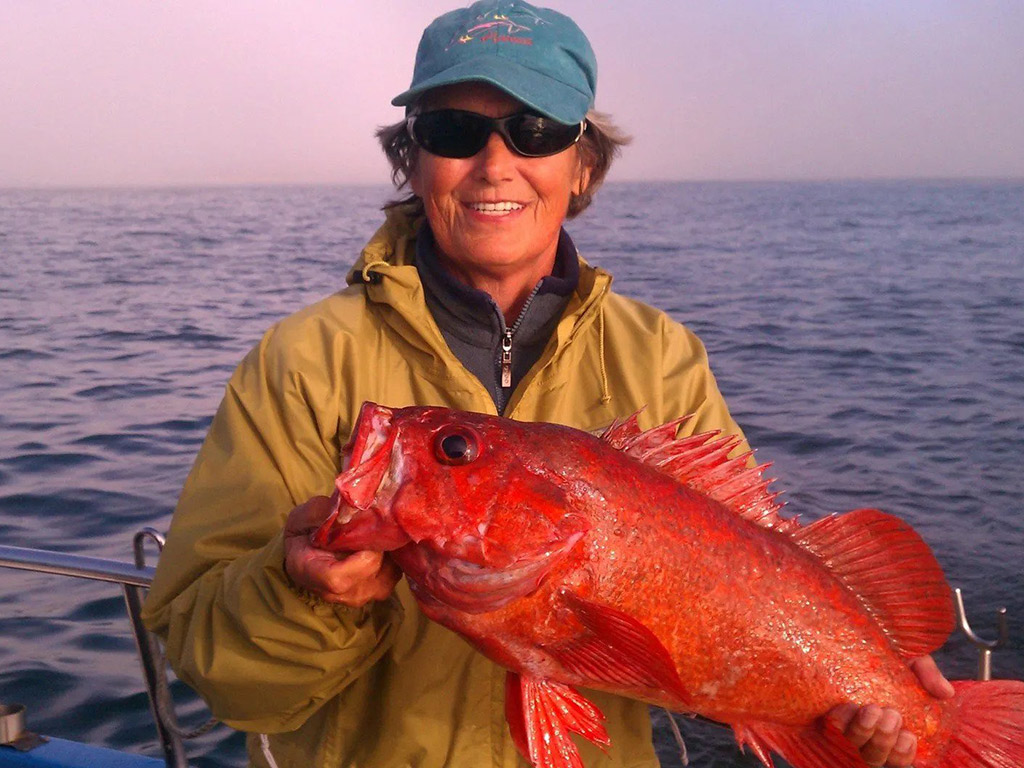
Now we turn our attention to one of the most recognizable species on the West Coast – Rockfish. San Francisco is home to some 14 different kinds of Rockfish, so you can never be exactly sure what’s biting on the other end of your line. We group them together because they all share traits that are relevant to your fishing experience.
For starters, they’re all bottom feeders and usually make for excellent table-fare. In springtime, you’ll mostly find them near the plentiful offshore reefs. Then around June, expect them to head closer to the shore in bigger numbers. This is when Rockfishing really picks up and stays that way up until the end of the year. They’re real suckers for live bait like sardines and anchovies, so be sure to use them to your advantage.
Halibut
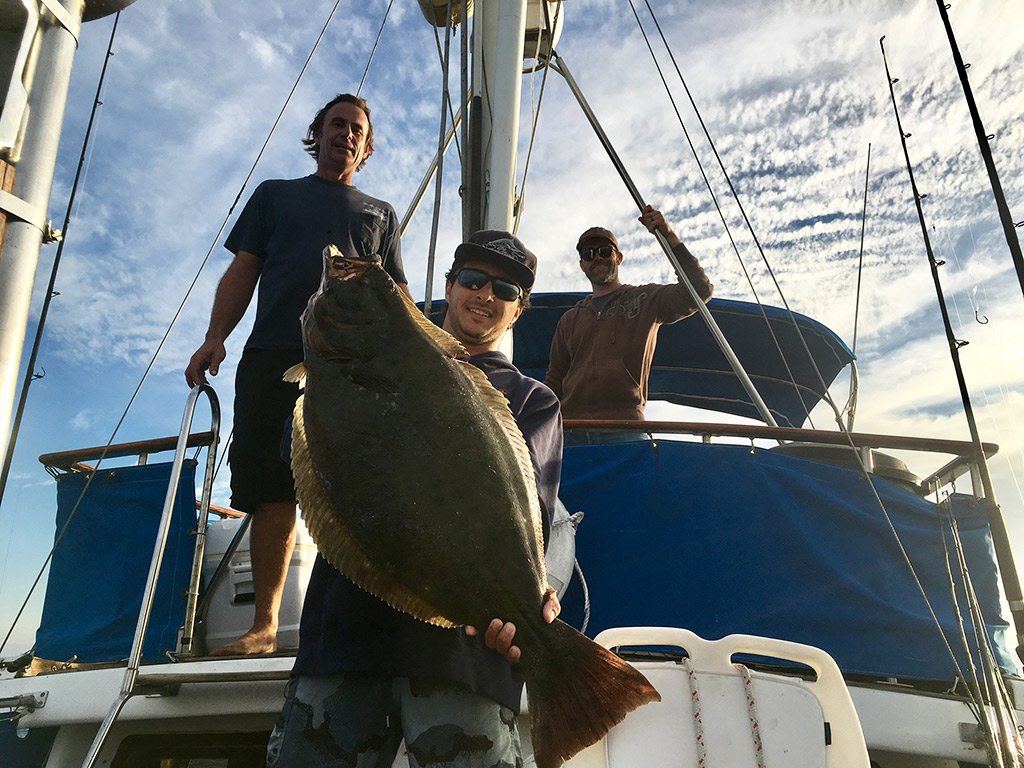
The first thing you should know about this bottom fishing favorite is that there are actually two of them in San Francisco. Both Pacific and California Halibut call these waters home, with the Californian being a more common sight than its Pacific sibling. Equally popular with both recreational and commercial anglers, it’s another fish you don’t want to miss if you appreciate quality seafood.
Best of all, you’ll find Halibut in these waters during the entire year. They really hit their stride in late spring and summer, so that’s when you should plan to be on the water if you’re gunning for some “big buts” as they’re called by plenty of local anglers. When fishing, keep in mind that Halibut have a very light bite, so pay attention to any tugging on your line until you get the hang of it.
Albacore Tuna

No discussion on deep sea fishing in San Francisco is complete without mentioning Albacore Tuna! The definition of a fighting fish, these bad boys are often the main reason for someone coming to the Fog City in search of rod-bending action. While you can find them in the deep blue from June through December, sometimes you’ll need to go a few dozen miles offshore before you run into any.
We recommend planning a trip in August or September when they’re as close to shore as they can get. If you’re lucky, that’s as close as 10–15 miles out. When heading offshore after Tuna you’re looking to reach the temperature break where the water warms up to about 58.5°F. They come in all sizes, from smaller “footballs” at about 5 pounds, to the bigger 50 lb beauties.
And More…

These are the main highlights of the fishery for sure, but there’s more where that came from. Add to that some Sharks, Lingcod, and even Dungeness Crab, and you’ve got options for every type of angler – from fresh beginners to rugged professionals alike. And speaking of options, let’s take a look at how you should go about catching these awesome species.
How can I go deep sea fishing in San Francisco?
The rookies can relax because not every species here requires its own technique. Sure, you’ll need to tailor your approach to the fish you’re trying to catch, but your charter captain can easily provide you with some pointers. In most cases, you’ll be either trolling or bottom fishing when heading out into the deep blue. If you booked a longer trip you might be able to do both, along with setting some crab traps on your way to the fishing grounds.
Bottom Fishing
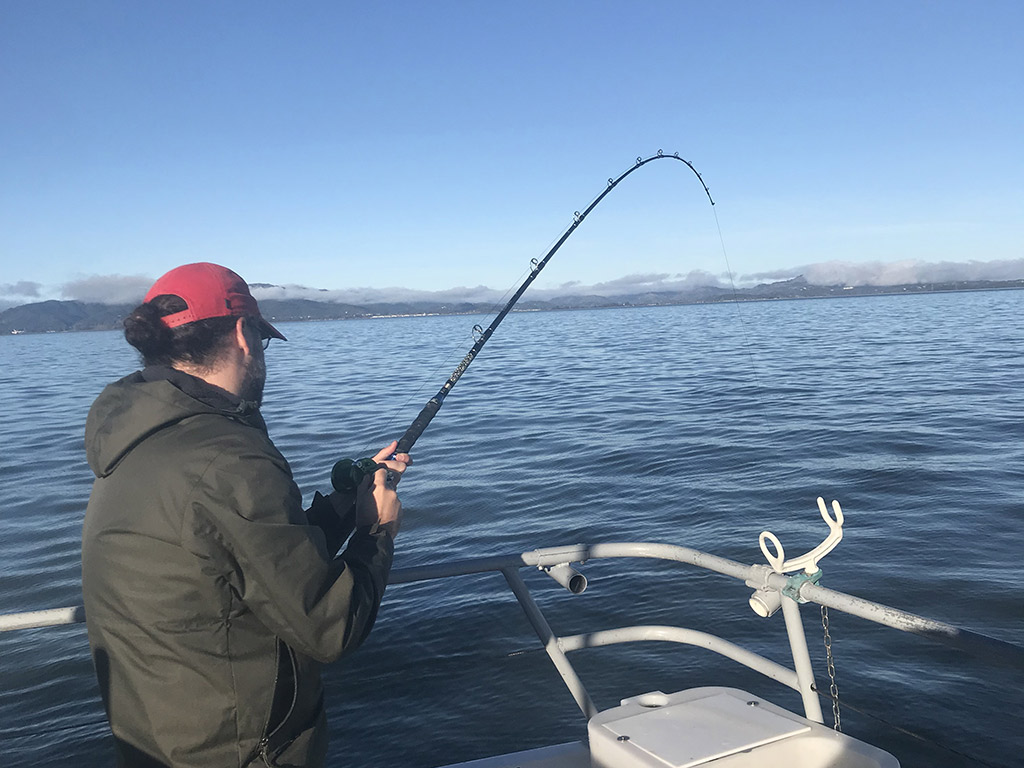
The “default” way of going after different bottom-dwellers like Halibut and Rockfish – bottom fishing is the simplest way to start your fishing journey. Finding a good spot is crucial – what you’re essentially doing is dropping the bait right on top of your target and waiting for the bite. Of course, the reality is often not as simple as that, and there’s plenty of room for finesse and skill.
Verticality is a big deal for bottom fishing, especially when near deep structures below. This is often the case when Rockfishing. Anchoring can be tricky, so most anglers will simply drift when they reach their chosen spot. On the other hand, some wily captains will instead throttle their engines when they’re ready to fish in order to keep their lines steady and avoid drifting too far.
Trolling
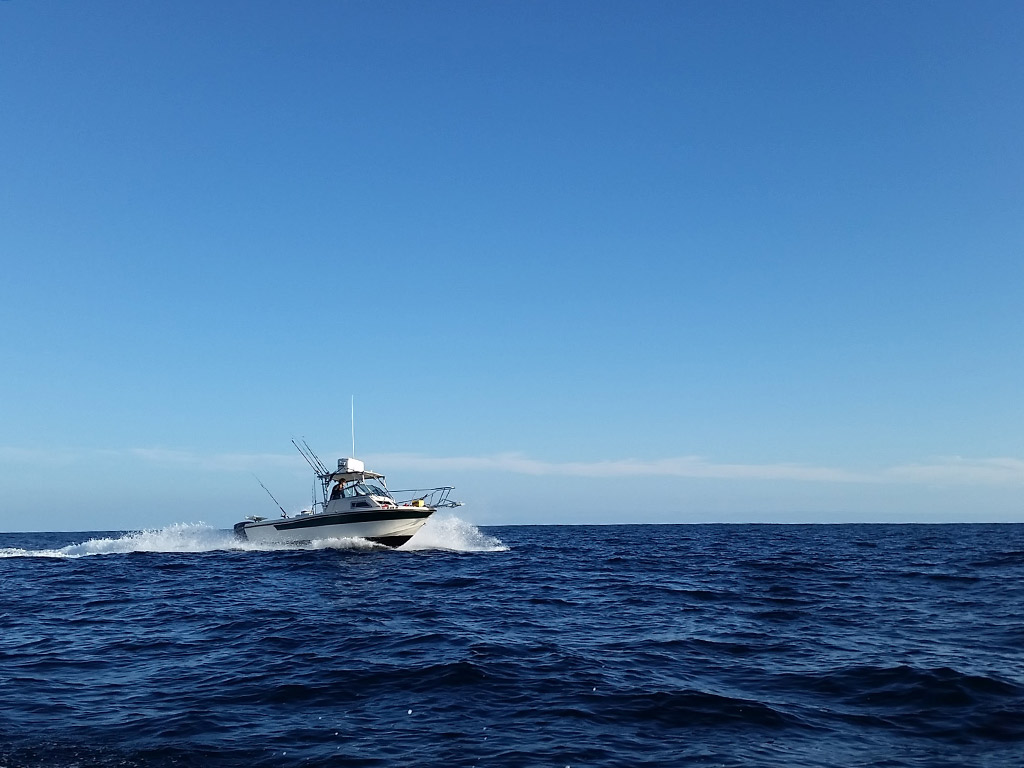
In a way, trolling is the very opposite of zeroing in on a productive spot. The main principle of trolling is simply: don’t stop. The boat is always on the move, with the rods fixed at the back in what’s called a trolling spread. Unlike bottom fishing where you’re holding your rod at all times, here you’ll only pick it up when you see that something is bending it. Hopefully, that’ll be a hefty Tuna ready to be reeled in.
This pick-up-and-go method makes it a great way for beginners to experience the most exciting parts of fishing without much hassle. But don’t expect it to be a cakewalk just because there’s no casting involved. You’ll still need to bring your catch in, and that can be the real test of strength. Thankfully, it’s all the more rewarding when you see the results of your hard work strewn across the deck.
Frequently Asked Questions
- Do I need a fishing license when deep sea fishing in San Francisco?
Yes. Every angler aged 16 and older needs to have a California fishing license. Check out our California Fishing License Guide for more information.
- Are there any size or bag limits I will need to observe?
Yes, there are both size and bag limits that vary depending on the species and body of water fished. We recommend consulting the CDFW website for the most up-to-date information or asking your charter captain about the specific species you want to catch.
- How long is a typical deep sea fishing trip in San Francisco?
Full day trips in the Pacific will usually last between 8–10 hours, with longer trip options also available for more experienced anglers.
- Do I need to be an experienced angler to go on a deep sea trip?
No. Most charter captains will be happy to show you the ropes and help you navigate the exciting world of deep sea fishing. Approach it with an open mind and you'll have a blast!
San Francisco Deep Sea Fishing: Welcome to the Golden Gates
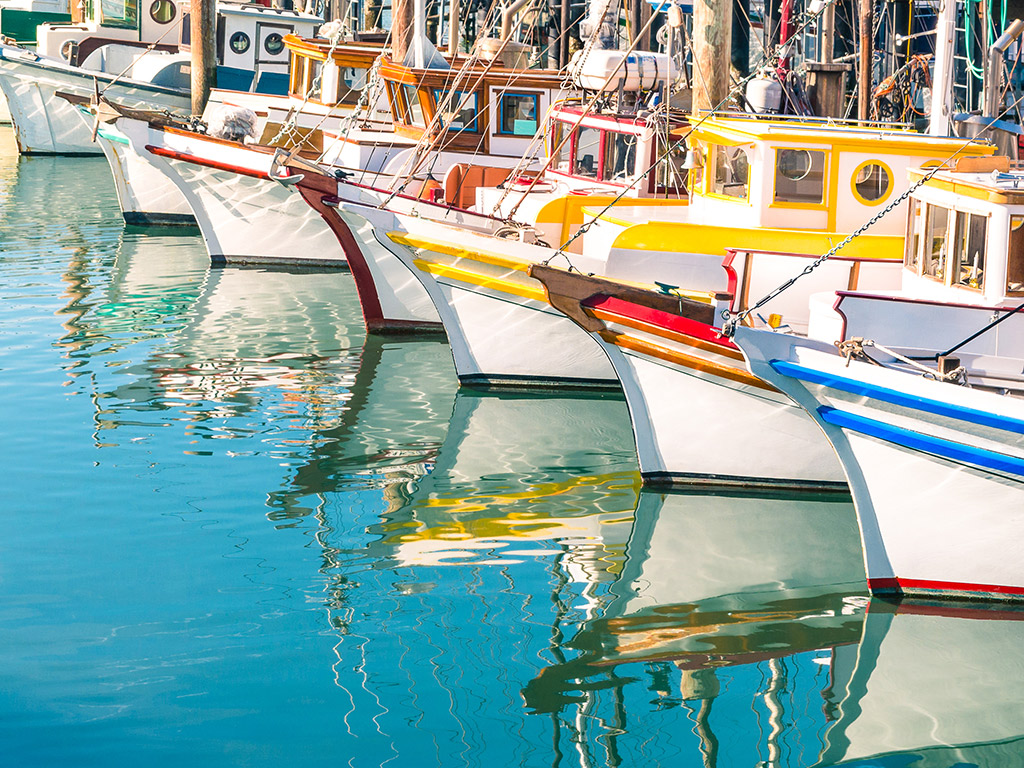
As you can see, there’s plenty to love about the local deep sea fishing scene in San Francisco. It’s hardly a surprise so many anglers keep coming back for more. Braving out beyond the Golden Gate Bridge into the Pacific depths is as rewarding as it gets. We certainly left our hearts in San Francisco – maybe you will, too.
Have you ever been deep sea fishing in San Francisco? How’d it go? If you have any stories to share with our readers, we’d love to hear from you in the comments below.
The post Deep Sea Fishing in San Francisco: The Complete Guide appeared first on FishingBooker Blog.
https://ift.tt/jCXqZB1
0 Comments
Enregistrer un commentaire